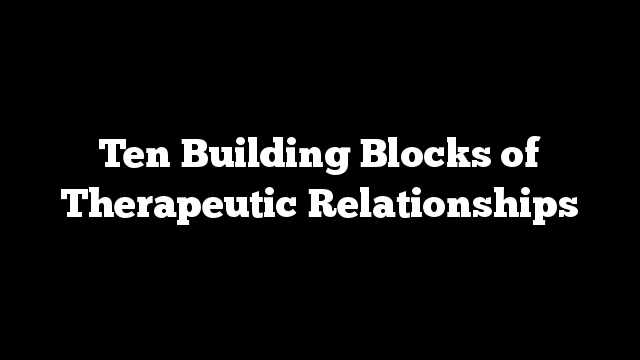
By HANS DUVEFELT, MD
It is well known by now that a physician’s demeanor influences the clinical response patients have to any prescribed treatment. We also know that even when nothing is prescribed, a physician’s careful listening, examination and reassurance about the normalcy of common symptoms and experiences can decrease patients’ suffering in the broadest sense of the word.
This has been the bread and butter of counselors for years. People will faithfully attend and pay for weeks, months and even years of therapy visits just to have an attentive and active listener and to feel like they have an ally.
We also have data that shows that adherence to treatment plans is dependent on how patients feel about their provider. One problem solved can build an ally for life
Primary care medicine is a relationship based business. I don’t know how often that basic fact is overlooked or denied. Whether you are trying to get another person to alter their lifestyle, take expensive medicines according to inconvenient schedules or even just trust and accept your diagnosis, you have to “earn” the right to do those things. Our titles and medical accoutrements give us a foot in the door, but they don’t usually get us all the way into peoples inner circles of trusted advisers.
In this age of corporate medicine, there is a belief that patients attach themselves to institutions and networks because of their trust in the organizations, and that therefore the connection with their individual providers is secondary.
I think that is a factor mostly when someone is looking for sophisticated specialty interventions, often one-time-only, like “where’s the best place to go for high risk cardiac surgery”.
When looking for primary care, people still tend to ask, “who’s a good doctor”, rather than “which is the better primary care group, Uptown Medical Associates or Statewide Primary Care”.
How do you as a clinician in today’s restless and mobile society earn trust and build therapeutic relationships in fifteen minute visits with several visible and invisible intruders in the room – the computer and the insurance company, for starters.
I have previously reflected on how to prepare yourself for beginning a clinical encounter. My ABCs are Attention, Behavior and Connection.
But where do you go from there, how do you continue, grow and nurture a therapeutic relationship over time in the kind of environment most of us work within?
Here are a few lessons I have learned myself:
1) Listen and respond. How many times do we hear that patients don’t get to speak for even a minute before we interrupt them? If you hear something that immediately requires clarification, do what you would do in a social situation. Say that what the other person just said is important or interesting, reflect back what you think you understood and then be careful not to give them too many yes or no options, but invite them to continue their story. Imagine that you’re meeting an interesting person at a dinner party, not leading a legal interrogation.
2) Set an agenda. Almost every time I ignore this little rule, I get burned. Patients may not reveal their real concern when making an appointment and their priorities may have changers since then. Going all-in with what you think is their main issue and saving “do you have any other concerns” until the end of the visit is a recipe for disaster. That agenda-setting may need to be addressed right away or after hearing a little about the main concern. If you don’t ask what people need from you, how can you ever hope to fill your role as their provider?
3) Budget time. Don’t act frustrated about the reality that time is at a premium, and don’t declare that you have too little of it until you know how serious or urgent your patient’s concern is. The person with a seemingly trivial concern may need you to help them with the biggest or worst problem of their life, so invest your time and attention on listening and understanding early on in the visit. By acting unhurried at first, you are more likely to create an atmosphere of trust and caring; once you know your patient’s concern and their diagnosis or differential diagnosis, if they feel heard, you can move more quickly to wrap up the visit if you need to.
4) Manage the perception of time. If I am running late, I often enter the exam room and demonstrably sit down, take a deep breath and relax my posture as if I am finally arriving at the most important appointment I have all day. That slowing down gesture helps me to undo my patient’s fear that I’m going to be rushing them along. If they think I’m not going to meet their needs, their memory of the visit will likely be just that, even if I do a pretty good job technically for them.
5) Don’t be a hero. My 2018 post “Be the Guide, Not the Hero” points out the fact that everyone is on heir own journey in life and we are at best guides in our patients’ pursuits. If we try to be the hero in their stories, we create unhealthy, dependent relationships that often lead to patient disappointment or even resentment. As guides instead of heroes, we also remind ourselves that we are not the ultimate experts on what is best for our patients. Since our patients are the heroes of their own stories, they must ultimately decide which piece of advice from which guide they will choose to follow.
6) Be true to yourself. On the one hand, I believe we must adapt our demeanor to the situation – reassuring, motivating, inquisitive or sometimes decisive – but we must stay within the range of our real selves. I can be jovial only to a point or I will seem and feel like I am pretending, for example. People can usually sense falsehood a mile away.
7) Balance disclosure. We can not build therapeutic relationships as only technicians; we must engage as real people and you can’t be real without showing emotion, genuine interest, engagement and a good amount of humility. We have to be careful to show that we are fallible like everybody else but also that we ultimately have our act together. Nobody wants a self absorbed, overconfident guide, but nobody wants a weak and insecure one either. If we say we never had tough choices to make or regrets we carry with us, how can we expect patients to allow us to be close enough to build trust?
I tell people things they could relate to that I don’t think would come back to haunt me. I tell them how many miles I have on my car, but not how much money I spent on repairs. I tell them about my life lessons from being a Boy Scout or going through basic training in the Swedish army, the antics of the beagles I’ve had in my life or the way my one-time vegetarian diet made me put on weight. I tell them I was homesick at my first scout camp, but I don’t talk about things that could distance patients from me; not that I am a golfer or a sailor, but pictures and magazines of such things will alienate as many patients as it might build relationship with. My Arabian horses didn’t cost much money, they were adopted from a horse rescue and simply needed a home. Our relationship with animals, I believe, is more likely to show that we have the capacity for relationship building with humans, too.
8) Build continuity. From one visit to the next, find a thread to follow. For some patients, it is their chronic disease, for others their family or their hobby. Reconnecting about what you talked about last time is a powerful and quick way to reestablish the fact that you know each other and that you care about your patient. It brings you straight into a space where you are ready to do the work you do. Even if you have to pull up their last visit in the EMR (maybe even looking at the screen together), that quick reconnection that begins every visit helps make you seem better prepared; maybe you don’t remember the details of the last visit but you do remember your patient very well.
9) Solicit participation. When it’s time to formulate a treatment plan, don’t be too quick to lay it out as if there is only one way to do things.
10) Plan when and how to reconnect. “Followup PRN” isn’t usually the best way to conclude a visit in your mind or the EMR. Friends don’t usually leave each other saying “I’ll see you around”, that’s more for casual acquaintances. It’s important to agree on what to do after the test results come in, when the antibiotic runs out, if the rash doesn’t go away or when to meet up if everything is going well. Not making such plans devalues the relationship and makes you look as if you don’t care about your patient.
Everything on this list is about how we interact with the people we engage with frequently or infrequently. We must always look beyond the diagnosis and the Chief Complaint (which should be Chief Concern – where did “complaint” come from?). Remember Osler:
The good physician treats the disease; the great physician treats the patient who has the disease.
Hans Duvefelt is a Swedish-born rural Family Physician in Maine. This post originally appeared on his blog, A Country Doctor Writes, here.
The post Ten Building Blocks of Therapeutic Relationships appeared first on The Health Care Blog.
